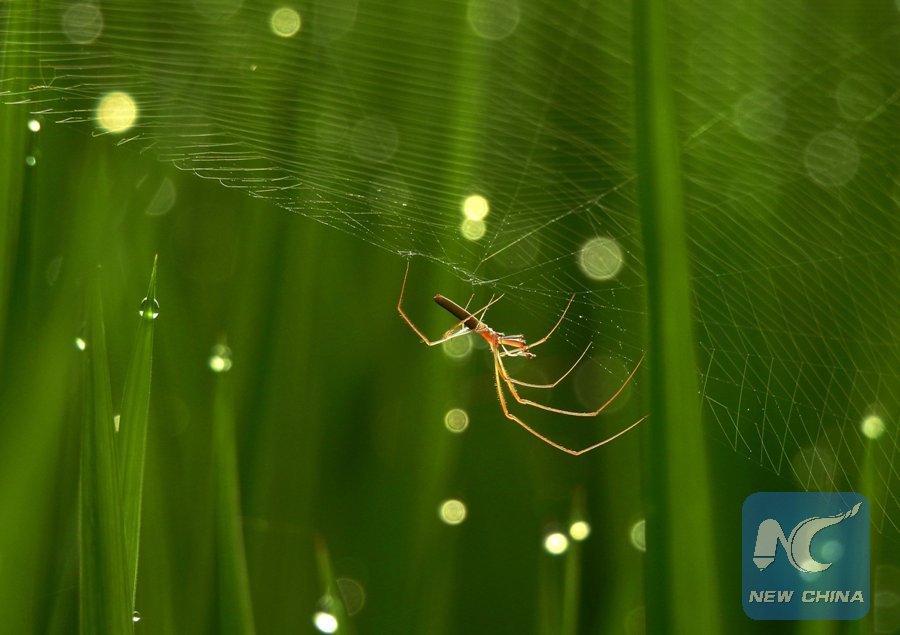
File Photo: A spider makes webs in rice field in Luoxiang Town of Congjiang County, southwest China's Guizhou Province, July 23, 2016. (Xinhua/Liang Yunkai)
WASHINGTON, July 5 (Xinhua) -- A study published on Thursday in the journal Current Biology has shown that spiders may fly by electric fields that trigger their ballooning and provide lift, even in the absence of air movement.
Spiders can travel many hundreds of miles through the air by releasing silk and floating away, which is called ballooning. Researchers had thought that ballooning behavior required drag forces from wind or thermals.
Erica Morley and her colleague Daniel Robert from the University of Bristol found that atmospheric electric fields might play a role.
"We don't yet know whether electric fields are required to allow spider ballooning," said Morley from the University of Bristol. "We do, however, know that they are sufficient."
The atmospheric potential gradient (APG), an electric circuit between the Earth and the ionosphere that is maintained by thunderstorms, is ever present around the world, according to Morley.
But the strength of the APG varies. On a calm day with clear skies, the APG may reach 100 V/m. On a stormy day or in the presence of charged clouds, the APG can soar to 10 kV/m.
Researchers carried out experiments in the lab with Linyphiid spiders. The lab environment allowed them to remove other stimuli, such as air movement, and provide a uniform electric field for the spiders.
The findings showed a significant increase in ballooning when electric fields were switched on.
That change in the spiders' behavior confirmed that spiders can indeed detect APG-like electric fields and that they respond to those electric fields by ballooning.
Once the spiders were airborne, switching the electric field on and off led them to move upward or downward, respectively, according to the study.
The researchers found that sensory hairs called trichobothria found on the surface of the spiders' exoskeletons move in response to electric fields. They suggested that those tiny hairs allowed detection of electric field stimuli by spiders.
Aerial dispersal is a crucial biological process for many caterpillars and spider-mites as well.
An improved understanding of the mechanisms behind dispersal are important for global ecology as they can lead to better descriptions of population dynamics, species distributions and ecological resilience.

